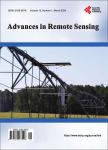Determining the Best Optimum Time for Predicting Sugarcane Yield Using Hyper-Temporal Satellite Imagery
Determining the Best Optimum Time for Predicting Sugarcane Yield Using Hyper-Temporal Satellite Imagery作者机构:Africa Institute of South Africa Science and Technology Programme Pretoria South Africa
出 版 物:《Advances in Remote Sensing》 (遥感技术进展(英文))
年 卷 期:2013年第2卷第3期
页 面:269-275页
学科分类:1002[医学-临床医学] 100214[医学-肿瘤学] 10[医学]
主 题:Sugarcane NDVI Yields Spot Vegetation
摘 要:Hyper-temporal satellite imagery provides timely up to date and relatively accurate information for the management of crops. Nonetheless models which use high time series satellite data for sugarcane yield estimation remain scant. This study determined the best optimum time for predicting sugarcane yield using the normalized difference vegetation index (NDVI) derived from SPOT-VEGETATION images. The study used actual yield data obtained from the mill and related it to NDVI of several two-month periods of integration spread along the sugarcane growing cycle. Findings were in agreement with results of previous studies which indicated that the best acquisition period of satellite images for the assessment of sugarcane yield is about 2 months preceding the beginning of harvest. Overall, of the five years tested to determine the relationship between actual yield and integrated NDVI, three years showed a significant positive relationship with a highest r2 value of 85%. The study however warrants further investigation to improve and develop accurate operational sugarcane yield estimation models at the local level given that other years had weak results. Such hybrid models may combine different vegetation indexes with agro-meteorological models which take into account broader crop’s physiological, growth demands, and soil management which are equally important when predicting yield.



